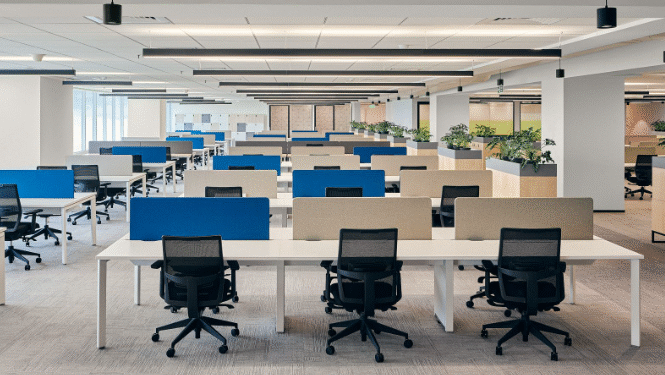Flexible workspace solutions allow you to customize and expand your space as your start-up company grows. They offer individual workstations and large meeting rooms, catering to your business’s collaboration needs. Here are some tips for choosing the right office space for your start-up:
Prioritize Workspace Flexibility
Choosing a flexible workspace allow kools your company to adapt to changing operational needs. This approach offers alternatives for configuring layouts and leasing terms rather than committing to rigid, long-term agreements. A workspace tailored to your company’s size, goals, and culture enables you to generate efficient workflows. Collaborative areas with casual breakout zones encourage teamwork and the exchange of ideas. Implementing hot-desking and shared spaces gives employees the freedom to work where it suits them instead of being restricted to assigned desks. Modular furniture also adds versatility, so you can adjust the seating arrangements when needed.
Find Functional Layouts
Open floor plans can support acoustics and concentration by grouping spaces designated for focused work. Separating high-traffic areas from busy work zones may help minimize disruptions. Strategically placed breakout areas provide space for quick collaboration or informal meetings. Room sizes and features that align with each department’s needs support workflow and help employees better understand the work process. Thoughtful placement of printers, phones, and other equipment also contributes to overall efficiency.
Look for Upgraded Technology
A suitable office space should have the proper infrastructure for your start-up to maintain momentum, including reliable electrical systems and sufficient internet bandwidth to support various technologies. Easy access to power outlets helps meet equipment needs while minimizing cable clutter and tripping hazards. Advanced electrical systems with built-in redundancies may prevent outages and disruptions. Strong, reliable internet bandwidth supports smooth communication and avoids slowing down operations. Some companies may also need to incorporate collaborative tools and automation to enhance productivity. Choosing an office space with tools like presentation equipment helps facilitate seamless meetings, training sessions, and client pitches.
Assess the Office Amenities
Office amenities can support focus, collaboration, and comfort. Flexible work furniture allows employees to customize their work settings for better ergonomics, and height-adjustable chairs may help reduce fatigue. Multifunction rooms with advanced technology can support everything from quick team huddles to formal board presentations. Reservable conference rooms equipped with video capabilities make remote meetings seamless. Well-stocked break rooms offer spaces to recharge, while community kitchens support convenient in-office meal prep and dining.
Look for Aesthetic Designs
Design elements like color palettes and modern finishes can help create a visually cohesive environment. Incorporating greenery, natural lighting, or landscape-inspired features may contribute to a more comfortable workspace. Features such as art displays or background music can enhance the overall atmosphere and reflect your brand’s personality. These environmental touches may help make the office appear more intentional and well-organized.
Explore Flexible Office Space Options
A flexible office environment can support various aspects of your company’s operations, including productivity and scalability. On-site amenities may encourage creativity, strengthen collaboration, and help team members recharge. Customizable workstations give employees the ability to adjust their setup for comfort and efficiency. Thoughtfully designed layouts support clear workflows and adaptability. Explore flexible office space solutions today to find one that can grow and evolve with your business needs.










